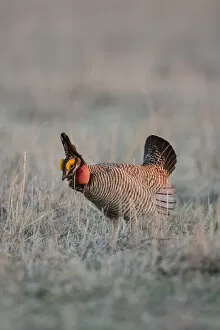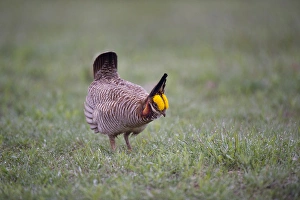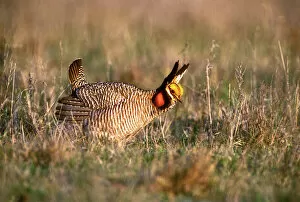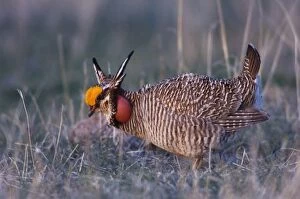Lesser Prairie Chicken Collection
In the vast plains of the Texas Panhandle, a remarkable dance unfolds
All Professionally Made to Order for Quick Shipping
In the vast plains of the Texas Panhandle, a remarkable dance unfolds. The Lesser Prairie Chicken (Tympanuchus pallidicinctus) takes center stage on its lek, captivating all who witness its display. With feathers adorned in earthy tones and intricate patterns, the male lesser prairie chicken struts with confidence and grace. His vibrant orange air sacs inflate as he emits deep booming calls that resonate across the open landscape. This ancient ritual is known as lekking, where males gather to compete for the attention of females. Each bird meticulously selects his spot within this communal arena, ensuring maximum visibility for his elaborate performance. As dawn breaks over the Canadian region of Texas, these magnificent creatures engage in an enchanting spectacle. Their synchronized movements reveal their strength and agility while showcasing their unique courtship rituals. The rhythmic stomping of feet creates a mesmerizing beat upon which their delicate partners will make their choice. Wings spread wide, tails fanned out like elegant fans; they create an awe-inspiring sight against the backdrop of golden grasses swaying in harmony with nature's symphony. These charismatic birds are not only masters of dance but also key players in maintaining healthy ecosystems. As they move from one lek to another throughout their range, they disperse seeds and help control insect populations - playing a vital role in preserving biodiversity. However, despite their resilience and adaptability to harsh environments, lesser prairie chickens face numerous challenges today. Habitat loss due to agriculture expansion threatens these iconic species' survival along with other human-induced factors such as climate change and energy development activities. Conservation efforts have been put forth by organizations aiming to protect these remarkable birds through habitat restoration initiatives and land management practices that balance economic needs with wildlife preservation, and is our responsibility to ensure that future generations can witness this extraordinary natural phenomenon unfold before them – a testament to both nature's beauty and our commitment towards coexistence with the creatures that share our planet.





